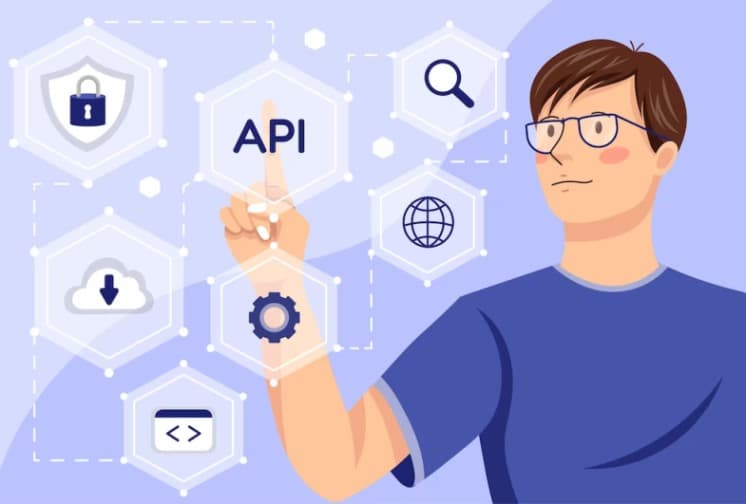API-First Development: Paving the Way to Digital Excellence

I. Introduction
In the ever-evolving landscape of software development, a paradigm shift has occurred—API-First Development. This groundbreaking approach places Application Programming Interfaces (APIs) at the forefront of the development process, heralding a new era of flexibility, scalability, and accelerated innovation. This comprehensive article delves into the core tenets, benefits, and strategies of API-First Development, elucidating why APIs should take precedence in the digital realm.
II. Decoding API-First Development
1. Fundamentals of API-First:
- Definition: API-First Development involves designing and creating APIs before constructing the user interface or other components of an application.
- API as a Product: Treat APIs as products with well-defined interfaces, promoting a modular and streamlined development approach.
2. Shift from Monolithic to Modular:
- Breaking Monoliths: Depart from monolithic architectures by breaking down functionalities into modular, interconnected APIs.
- Microservices Architecture: Embrace microservices architecture, where individual APIs encapsulate specific business functions.
3. Collaborative Development:
- Cross-Team Collaboration: API-First fosters collaboration between frontend, backend, and mobile development teams from the project’s inception.
- Parallel Development: Teams can work concurrently on API design and implementation, expediting the overall development lifecycle.
III. The Power of Prioritizing APIs
1. Rapid Prototyping:
- Prototype Creation: APIs serve as the backbone for creating prototypes, allowing developers to visualize and refine functionalities swiftly.
- User Feedback: Early API prototypes facilitate gathering user feedback before investing significant resources in frontend development.
2. Enhanced Flexibility:
- Adaptability: APIs provide a flexible foundation, enabling seamless adaptation to changing requirements without major overhauls.
- Cross-Platform Compatibility: APIs facilitate cross-platform development by decoupling the backend logic from frontend implementations.
3. Scalability and Efficiency:
- Scalable Architecture: API-First architectures inherently support scalability by distributing functionalities across modular APIs.
- Resource Efficiency: Optimize resource usage by allowing selective scaling of specific APIs based on demand.
4. Ecosystem Integration:
- Third-Party Integrations: Prioritized APIs simplify integration with third-party services, fostering a rich ecosystem around your application.
- Open Innovation: APIs as a priority encourage external developers to build on your platform, driving innovation through collaboration.
IV. Strategies for Successful API-First Development
1. API Design Tools:
- Utilize API Design Tools: Leverage tools like Swagger, OpenAPI, or GraphQL for efficient and standardized API design.
- Documentation-Driven Development: Start with API documentation to articulate design, fostering clarity and alignment.
2. Mocking and Prototyping:
- Mock API Servers: Create mock API servers for early testing and validation, promoting a smooth transition from design to implementation.
- Prototyping Tools: Employ prototyping tools that consume APIs directly, ensuring realistic simulations of end-user interactions.
3. Continuous Testing:
- Automated Testing: Implement robust automated testing processes to validate API functionality continuously.
- Contract Testing: Embrace contract testing to verify that APIs adhere to predefined specifications, ensuring seamless integration.
4. Security by Design:
- Prioritize Security Measures: Bake security into API design, implementing robust authentication and authorization protocols.
- Regular Security Audits: Conduct periodic security audits to identify and address vulnerabilities proactively.
V. Embracing API-First: Challenges and Solutions
1. Challenges:
- Learning Curve: Teams may face a learning curve in adopting API-First methodologies.
- Resistance to Change: Resistance to transitioning from traditional development approaches to API-First practices.
2. Solutions:
- Training and Education: Invest in training programs to equip teams with the skills needed for API-First development.
- Gradual Transition: Facilitate a gradual transition, allowing teams to adapt and witness the benefits incrementally.
VI. Conclusion: Shaping the Future with APIs
In conclusion, API-First Development emerges not merely as a methodology but as a transformative ethos reshaping how digital solutions come to life. By prioritizing APIs, organizations unlock a spectrum of advantages—from rapid prototyping to enhanced scalability and ecosystem integration. As the tech landscape continues to evolve, embracing API-First practices becomes not just a choice but a strategic imperative for those envisioning digital excellence. The future is API-driven, and those who prioritize APIs today are the vanguards of tomorrow’s technological landscape.




